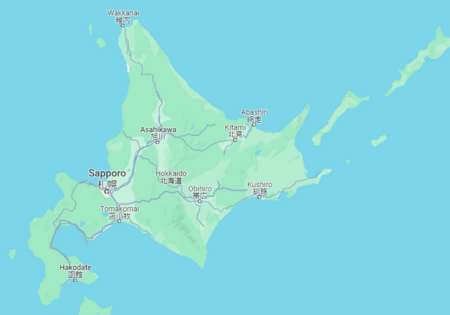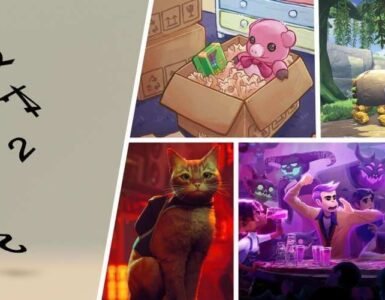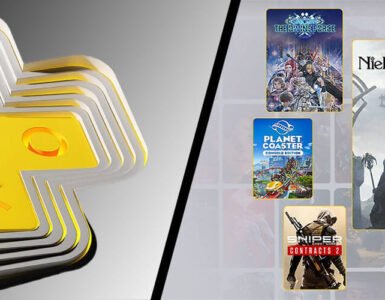The Pokémon franchise is a global phenomenon. While many may know it as a trading card game or TV series, everything started with a pair of games released in 1996. Over 130 Pokemon games have been published over the last 28 years, and with each new mainline release, the series introduces a new location. These fictional settings take inspiration from real-world Pokemon regions across the globe, featuring cities, landmarks, and geography similar to the actual location.
Exploring Real-World Pokemon Regions
Kanto Region
Kanto, Japan
Kanto is the region that started the Pokemon legacy, based on the real-world Kanto region in Japan. The most populated region in Japan, Kanto covers seven prefectures, including Tokyo.
Saffron City, the largest city in Pokemon’s Kanto region, roughly aligns with Tokyo’s location. The fictional city is also home to Silph Co.’s headquarters, a nod to Tokyo’s distinction as the business hub of Japan. However, a notable difference between the real-world Kanto and the game version is the location of Vermillion City. Supposedly inspired by Yokohama, Vermillion City lies on the eastern side of the bay in-game, whereas Yokohama is located on the western side of Tokyo Bay.


Maps comparing the Kanto region in Pokemon to the real-world region in Japan.
In Fire Red and Leaf Green, Kanto expanded to include the Sevii Islands. This change introduced more real-world Pokemon regions, as the location is inspired by the Izu and Ogasawara Islands, which are officially considered part of the Tokyo Metropolitan Government (despite some islands being 1,000 km away from Tokyo).
Johto Region
Kansai, Japan
West of Kanto is the Johto region. This area is based on Japan’s Kansai region, which also lies west of the real-world Kanto region. In the Pokemon games, Kanto and Johto are neighboring regions, but in reality, there is another region between Kansai and Kanto.
Kansai is home to several famous cities, including Osaka and Kyoto, both of which have equivalents in the Johto region. Goldenrod City represents Osaka, and Ecruteak City is based on Kyoto. The placement of these cities on the Johto map is similar to the real-world locations. Near Ecruteak City is the Lake of Rage, which corresponds to Lake Biwa, the largest lake in Japan.


Maps comparing the Johto region in Pokemon to the Kansai region in Japan.
Both cities also feature landmarks that resemble famous attractions. Goldenrod City has the Goldenrod Radio Tower, modeled after Osaka’s Tsutenkaku tower. The design of Ecruteak’s Bell Tower echoes the Toji Pagoda in Kyoto, which is the tallest pagoda in Japan.
Hoenn Region
Kyushu, Japan
The Hoenn region lies southwest of Kanto and Johto. This location is based on Kyushu, the southernmost of Japan’s main islands. As with the other regions based on Japan, Hoenn’s geography roughly matches Kyushu. When comparing the two, Hoenn’s shape is rotated 90 degrees counter-clockwise, presumably to fit better on a Gameboy Advanced screen.


Maps comparing the Hoenn and Kyushu regions. The Kyushu map was rotated to reflect Hoenn’s design.
Hoenn has numerous cities with real-world counterparts, such as Rustport City for Fukuoka and Slateport City for Nagasaki. Like Kyushu, this region is noted for its large volcano, Mt. Chimney, which represents Mt. Aso, Japan’s largest active volcano. While not a volcano in the game, Mt. Pyre’s placement reflects the location of Mt. Sakurajima, one of Japan’s most active volcanoes.
In addition to mainland Hoenn, the region features many islands. These represent some of the smaller islands around Kyushu and Okinawa, Japan’s southernmost island. Ever Grande City is based on the Naha, the capital of Okinawa. The city is home to the Hoenn Pokemon League, whose Omega Ruby and Alpha Sapphire design resembles Shuri Castle, a traditional Okinawan-style castle.
Sinnoh/Hisui Region
Hokkaido, Japan
Sinnoh and Hisui are the same region; however, Hisui is the historical name for the region, while Sinnoh is the modern name. This region lies north of the Kanto, Johto, and Hoenn regions. Since Sinnoh is Pokemon’s interpretation of Hokkaido, its placement reflects the area’s actual location in relation to the other three real-world Pokemon regions (Kanto, Kansai, and Kyushu).
Like its real-world counterpart, Sinnoh is an island separate from the other major regions in the area. Mt. Coronet is the most prominent feature of this region, splitting the island in half. The peak, Spear Pillar, corresponds to the location of Asahi-dake, the tallest mountain in Hokkaido.


Maps comparing the Sinnoh/Hisui region and Hokkaido.
Jubilife appears in both versions of the region, known as Jubilife City in Sinnoh and Jubilife Village in Hisui. Both versions take inspiration from Sapporo, the capital of Hokkaido. Jubilifie City has the Jubilife TV building, a reference to the Sapporo TV headquarters. Jubilife Village houses Galaxy Hall, which resembles the former Hokkaido Government Office.
Unova Region
New York City, United States
Unova marks a turning point in the Pokemon franchise with a setting inspired by the United States. Previously, all the real-world Pokemon regions were in Japan. According to Jnichia Masuda, a founding member of Game Freak, this region was inspired by Manhattan in New York City. In reality, Unova’s cities and landmarks encompass several boroughs and parts of New Jersey.
Castelia City and Nimbasa City are the two locations in the Unova region that most closely align with Manhattan. Castelia City is the region’s business district, with skyscrapers and commercial buildings (including the Game Freak office). Its atmosphere and location echo the finance district of New York City in lower Manhattan.


Maps comparing the Unova region and the greater New York City area.
In contrast, Nimbasa City is a “bustling city of entertainment.” This city is home to the Musical Theater, a flashy building where the Pokemon Musical takes place. The city’s focus on entertainment and map location align with New York’s famed theater district in central Manhattan.
Kalos Region
France
Kalos is based on the concept of beauty, which is why the development team decided to use France as the inspiration for this region. The area imitates the northern half of France, particularly Paris and the surrounding territory.
Lumiose City is the heart of the Kalos region, known for its famous landmarks and popularity with tourists. Its design, lore, and location are similar to its real-world counterpart of Paris. Lumiose City is shaped like a wheel, with streets running from the outer “rim” to converge in the center of the city. Paris has a similar layout, though the streets aren’t as orderly as Kalos.


Maps comparing the Kalos region and France.
The most famous landmark in both Kalos and France is their iconic lattice tower. Prism Tower in Lumiose City was based on the Eiffel Tower. Other landmarks recreated in the Kalos region include Mont Saint-Michael (Tower of Mastery) and the Forest of Fontainebleau (Santalune Forest).
Alola Region
Hawaii, United States
Alola is a series of islands modeled after the US state of Hawaii and is the first of the real-world Pokemon regions with a tropical setting. While Hawaii officially has 137 islands (only seven are inhabited), Alola has four, corresponding to Hawaii’s four largest and most well-known islands.
The first island trainers encounter is Melemele, which corresponds to the island of O’ahu. The other islands in Alola are Akala Island, Ula’Ula Island, and Poni Island. These correspond to Maui, Hawai’i (aka the Big Island), and Kaua’i. Each island in Alola is named after a Hawaiian word for color, and these names represent the official color for each real-world counterpart. Melemele is yellow, Akala is pink, Ula’Ula is red, and Poni is purple.


Maps comparing Alola and Hawaii. Unlike other regions, Alola is not shaped like its real-world counterpart.
Besides being based on the islands, Alola also takes inspiration from several Hawaiian cities and landmarks. Hau’oli City on Melemele Island is similar to Honolulu in O’ahu. Akala Island has the Ruins of Life, which is home to the guardian deity Tapu Lele. Maui is famous for having Piʻilanihale Heiau, the largest historic temple in Hawaii. Blush Mountain is located on Ula’Ula Island and resembles Kīlauea, a large active volcano on the Big Island. Poni Island is characterized by Vast Poni Canyon, which takes up almost half of the island. Its geography is similar to Waimea Canyon State Park on Kaua’i, often referred to as the “Grand Canyon of the Pacific.”
Galar Region
United Kingdom
Galar, including the areas for Crown Tundra and the Isle of Armor, is based on the United Kingdom. The main region draws most of its inspiration from Great Britain, while Crown Tundra is based on Scotland, and the Isle of Armor is based on the Isle of Man.
While Galar features locations like Wyndon based on large cities in the United Kingdom (in this case, London), Game Freak also highlights aspects of rural Britain. Route 4 near Turrfield has low stone walls scattered throughout the area as a reference to the field boundaries often seen in the British countryside. Turrfield itself features ancient stone structures reminiscent of Stonehenge.


Maps comparing the Galar Region and the United Kingdom.
Crown Tundra
A notable location in the Crown Tundra area is Crown Shrine, an area at the top of a mountain dedicated to Calyrex, the King Pokemon. The appearance and placement of the Crown Shrine were inspired by Edinburgh Castle in Scotland, which sits atop Castle Rock.
Isle of Armor
The Isle of Armor houses the Towers of Two Fists. Unlike other real-world Pokemon regions, these towers have no corresponding real-world locations. Instead, it’s speculated that they are based on local history from the Isle of Man. The Tower of Waters may be based on the Tower of Refuge, a shelter for shipwrecked seafarers, and the Tower of Darkness may take inspiration from the supposedly haunted Peel Castle.
Paldea Region
Iberian Peninsula
The newest major region in the Pokemon franchise, Paldea, is based on the Iberian Peninsula, which consists of Spain, Portugal, and Andorra. Of the three countries that make up the Iberian Peninsula, Paldea most closely resembles Spain, with some references to Portugal.
Paldea’s largest city, Mesagoza, mixes elements from Spain’s largest cities, Barcelona and Madrid. The central plaza of Mesagoza resembles the Plaza Mayor in Madrid, while the Naranja/Uva Academy design draws inspiration from Barcelona’s Sagrada Familia cathedral. There are some influences from Toledo, Spain’s former capital, in Mesagoza as well.


Maps comparing the Paldea Region and the Iberian Peninsula.
Portuguese influence is mainly found in the West Province of Paldea. The city of Carscarrafa has blue and white buildings often seen in southern Portugal, and Porto Marinada was inspired by the coastal town of Costa Nova.
Bonus Real-World Pokemon Regions
There are several regions additional from DLC content and spin-off games based on real-world locations. These include:
- Kitakami: Tohoku Region, Japan
- Orre: Arizona, United States
- Oblivia: Oki Islands, Japan
- Pasio: Artificial island, no real-world equivalent
- Fiore: Okayama and Hyogo Prefectures, Japan
- Almia: Oshima Peninsula, Hokkaido, Japan
There is no shortage of amazing real-world Pokemon regions to visit while waiting for the next game. Are there any countries you would like to see represented in future Pokemon games? We’re hoping for a region based on Italy. Let us know your thoughts. Happy gaming!













Add comment